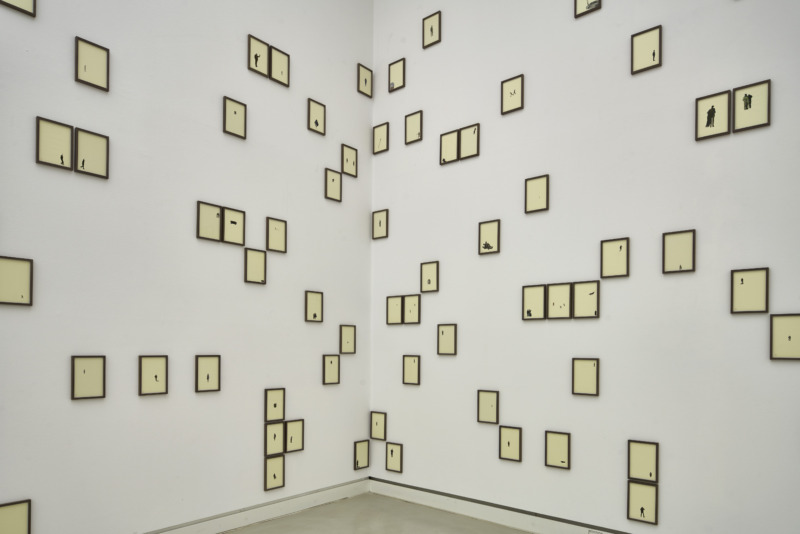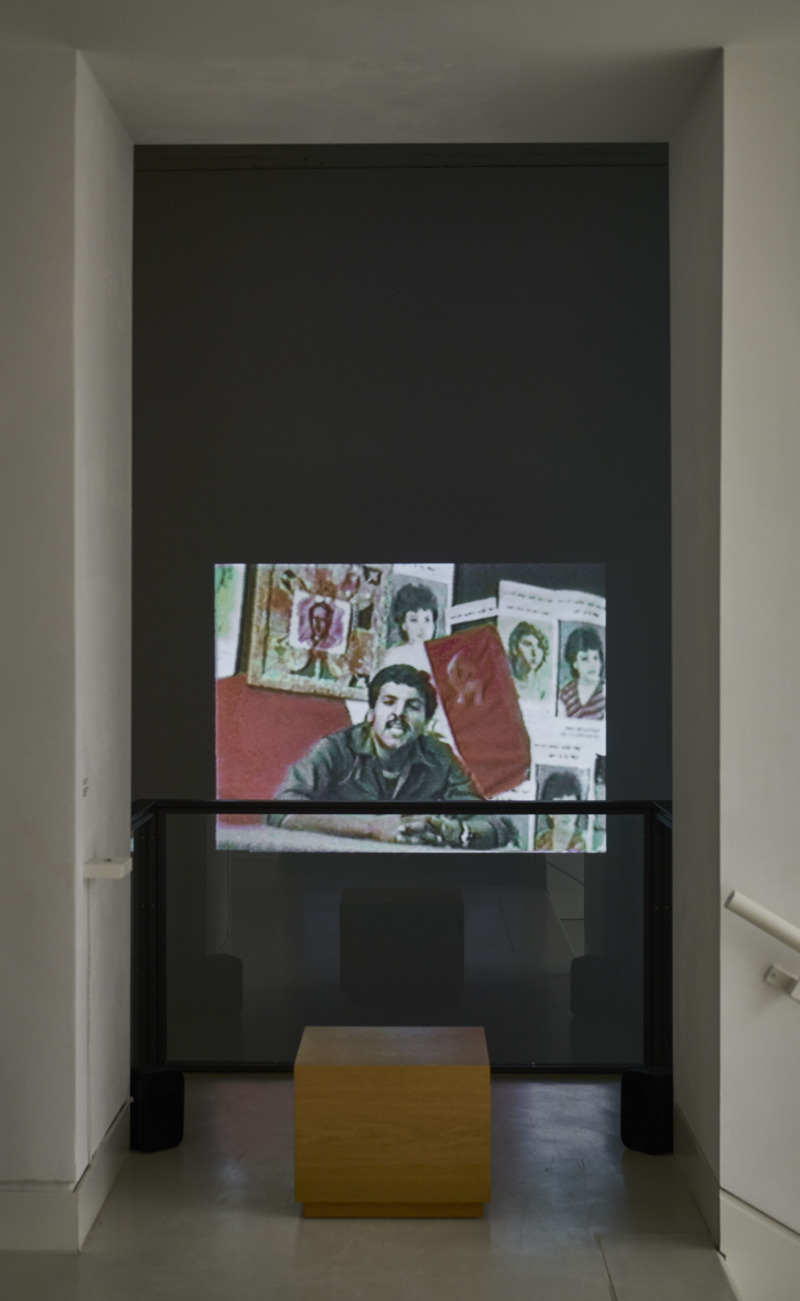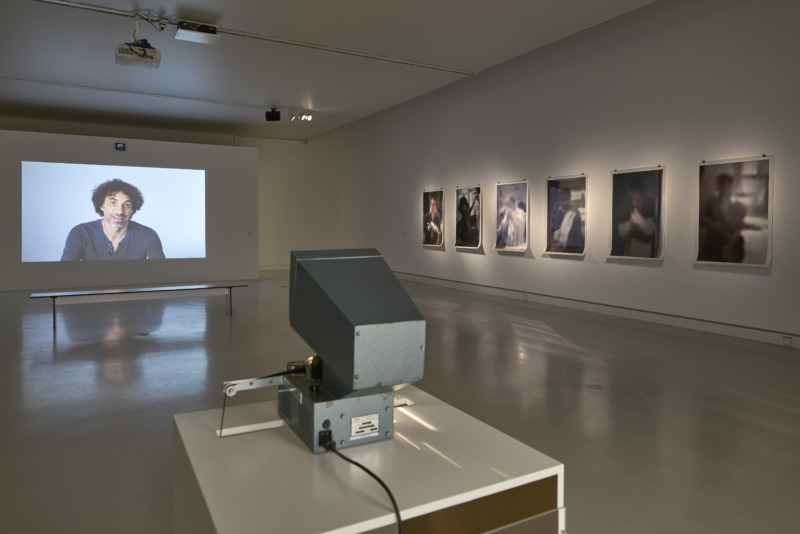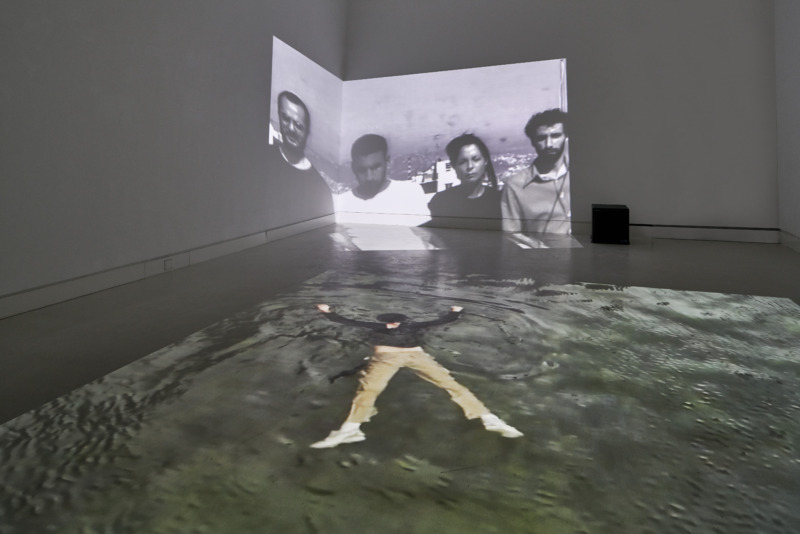
Rabih Mroué – Between Two Battles
11/11/16—26/02/17
Extract from Rabih Mroué: Between Two Battles
“For a long time my aunt on my mother‘s side have recorded TV snow, because she thought they contained subliminal messages from the enemies of Lebanon. She tried very hard to decode thesis messages but she has always failed. With time, she has become addicted to TV snow and she forgot that they were messages from the enemy. She silently record and archive TV snow. Maybe because she loves snow and in Beirut it never snows. Or maybe because she wanted to become a dancer and she found in synthesis reports her own choreographic scores.”
TV snow provided the inspiration for Rabih Mroué’s work Between Two Battles, which is also the title of the exhibition. Between Two Battles links an everyday experience in the lives of Lebanese inhabitants – grey static – with a specific figure: the artist’s aunt. We too are familiar with the blackand- white snow, or ‘noise’. Several decades ago it would appear on our screens at night after the end of transmission. There is a frequent but erroneous supposition that the pattern was formed from background radiation in space, where as in reality it is an abundance of overlapping vibrations in the device itself. Rabih Mroué takes up this technical phenomenon to spin a tale about a family member, Lebanon and its people, weather phenomena and the political situation.
The title, Between Two Battles, targets the pause, the (brief) intermission between two battles. It underlines the end of one clash while simultaneously announcing the next engagement, which will undubitably follow. There is no end in sight; the defining principle is strike and counterstrike. But for now we are ‘between’, when peace reigns supreme in a moment of respite, inviting us to reflect.
Rabih Mroué is all too familiar with both conflict and ceasefire. Born in Lebanon in 1967, he lived through—and was highly aware of—the country’s civil war from 1975 to 1990. He experienced his own family members being threatened and even injured. These existential experiences have shaped his thinking and art up to the present day, with his works exploring political developments in Lebanon and the Middle East. Images of war and terror, personal experiences and their effect on the individual all remain recurrent themes. The resulting works are anything but documentary-like in style; he takes the facts he has gathered and develops complex tales, interweaving fictitious elements with real-life events and personal experiences. Shocking news reports, violent acts, grim pictures are paired with people’s descriptions, which in some cases are the stuff of legend, although related in a sober tone. In this manner he contrasts the solemnity of factual reports and images from the press, radio, television or internet with his own stories and interpretations of events, and spoken in his own language. Inordinately distrustful of the way incidents are represented in the media, he questions the truth content of such acounts, tracing how a country’s history is rewritten through scattered images and reports. At the same time he actively weaves together stories and the present day, using his works to spread his own personal viewpoint on various occurrences and developments.
Rabih Mroué has now become one of the most important contemporary Lebanese artists. With wide-ranging works that blend literature, theatre, performance and fine arts, he develops new and up-to-date ways of combining the various genres and their vocabularies. He questions the demarcation between theatre and art, the relationship between an artwork’s space and form, and how this work addresses the viewer. How and with which media (video, installation, performance) can the viewer be reached and drawn in to the subject matter? How can individuality unfold when life itself is in constant danger? How are the different realities (that which is lived through, described, and experienced) interwoven? Rabih Mroué focuses on the political and cultural contexts of the ongoing conflicts, directing our attention both to the construction of identity and history, and the relevance of remembrance and forgetting. Thus he supports the complex—yet absolutely necessary—process of public perception, a process which directly influences the formation and character of the individual, society, politics, the economy, and art.
The Exhibition is supported by Stiftung Rheinland-Pfalz für Kultur and by Dr. Hans Feith und Dr. Elisabeth Feith-Stiftung.
Curated by Stefanie Böttcher.


Detail view: Rabih Mroué: Leap year's Diary, 2006-2016

Installation view: Rabih Mroué: On Three Posters, 2008

Installation view: Rabih Mroué: Face A / Face B, 2002

Installation view: Rabih Mroué: The Fall of a Hair, 2012

Installation view: Rabih Mroué: Grandfather, Father and Son, 2010; Between Two Battles, 2013; The Crocodile Who Ate The Sun, 1982, 2015
